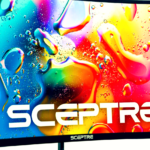The tech world is abuzz with excitement as Samsung, Google, and Qualcomm join forces to create a groundbreaking mixed reality experience. This powerhouse trio is set to shake up the industry with a project that could redefine how we interact with technology. While Apple’s Vision Pro has captured headlines, the secretive venture from these tech giants promises to bring a fresh perspective and potentially groundbreaking features to the mixed reality space.
A Glimpse into the Unknown
Unlike Apple‘s recent foray into the augmented reality (AR) realm with the Apple Vision Pro, or Meta’s foray into smart glasses with Ray-Ban Stories, the Samsung-Google-Qualcomm project remains shrouded in secrecy. No official announcements have been made regarding the product’s form factor, functionalities, or release date. However, Google’s Rick Osterloh’s presence at Samsung’s recent Unpacked event in Paris served as a subtle reassurance that the project is still very much alive.
This lack of information fuels intense speculation. Could this be the dawn of a powerful Android-powered MR headset capable of challenging the dominance of closed ecosystems? Or perhaps a revolutionary wearable device that seamlessly integrates artificial intelligence (AI) to enhance user experience? The possibilities are numerous, and each offers a glimpse into a future where the boundaries between physical and digital worlds are blurred.
A Match Made in Tech Heaven
The synergy between these three companies is what makes this project so intriguing. Samsung, a leader in hardware innovation, brings to the table their expertise in crafting sleek, powerful devices. We’ve seen this prowess in their Galaxy line of smartphones, ** foldable** devices, and the Samsung Gear VR headset, their previous foray into virtual reality (VR). This experience, coupled with their cutting-edge display technology, positions them perfectly to create a comfortable and visually stunning MR device.

Google, on the other hand, is a software powerhouse. Their Android operating system dominates the mobile world, and their advancements in AI are well-documented. An Android-powered MR headset could open doors for a vast ecosystem of MR-specific apps and experiences. Imagine seamlessly interacting with virtual objects layered onto the real world, powered by Google’s robust software and AI capabilities.
Qualcomm completes the trifecta with their prowess in mobile chipsets. Developing a chip specifically designed for MR devices is crucial for ensuring smooth performance and efficient battery life. Qualcomm’s experience in crafting powerful yet energy-saving processors will be paramount in creating a user experience that doesn’t drain the battery in minutes.
Beyond the Hype: Potential Applications
While the specifics remain a mystery, the potential applications of this MR project are vast. Here are a few exciting possibilities:
- Revolutionizing Education and Training: Imagine immersive learning experiences where students can explore historical events in 3D or dissect virtual frogs in a biology class. MR could also revolutionize professional training, allowing for realistic simulations in fields like construction, healthcare, and aviation.
- Enhanced Productivity and Collaboration: MR headsets could transform the way we work. Imagine architects holding virtual blueprints in their hands while on-site, or engineers collaborating on 3D models of new products in real-time. MR could also streamline communication, allowing remote teams to interact using virtual avatars in shared spaces.
- Entertainment Reimagined: Immerse yourself in a movie or concert as if you’re right in the middle of the action. MR could redefine entertainment, blurring the lines between passive consumption and active participation. Imagine exploring virtual worlds populated by characters you can interact with, or attending live events from the comfort of your home with an added layer of immersion.
- A New Frontier for Gaming: The potential for MR in gaming is particularly exciting. Imagine a world where virtual characters and objects seamlessly integrate with your physical environment, creating a truly immersive gaming experience. This could open doors for entirely new genres and gameplay mechanics.
Challenges on the Horizon
Despite the promise, it’s important to acknowledge the challenges facing this ambitious project.
Competition: Established players like Meta and Apple are already vying for dominance in the AR/MR space. To succeed, Samsung, Google, and Qualcomm will need to deliver a product that surpasses existing offerings in terms of features, user experience, and
User Comfort and Safety: MR headsets need to be lightweight, comfortable to wear for extended periods, and address potential eye strain issues. Additionally, ensuring user safety in a blended reality environment requires careful consideration.
Content Creation: A robust ecosystem of MR-specific content is crucial for a successful device. Developers will need to adapt existing experiences and create new ones specifically designed for the MR platform.
Privacy Concerns: The integration of AI and the potential for constant data collection in an MR environment raise privacy concerns. Addressing these concerns transparently will be crucial for user trust.







